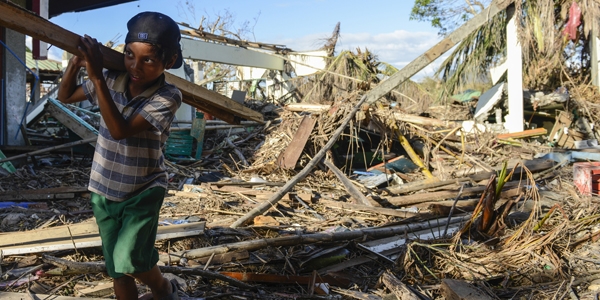The World Disasters Report 2016: the Ignition for Building Resilience

The world today is facing unprecedented crises and growing challenges. It has been estimated that 98.5 million people have been affected by disasters in 2015 alone. Furthermore, the number and scale of disasters triggered by natural hazards are increasing. Over 65 million people have been forcibly displaced both within and across borders, resulting in mounting humanitarian needs which are exceeding available resources. Meanwhile, the rate of globalisation and urbanisation makes the realities of health crises much harder to contain. The World Bank has projected that the share of Africans living in urban areas is projected to grow from 36 percent in 2010 to 50 percent by 2030. The impact of climate change is exacerbating the situation; 2015 was the hottest on record, with 32 major droughts, double the ten-year average.
“Never the world has known so much suffering since the Second World War”, said Elhadj As Sy, Secretary General of the International Federation of Red Cross and Red Crescent Societies (IFRC). “The number of people forced to leave or flee their homes due to insecurity, lack of sources of income, difficulties in accessing housing, to feed or take care of their families. No one has ever seen as much.”
The World Disasters Report 2016 launched this month by the IFRC highlights the present lack of global investment in strengthening community resilience which is leaving tens of millions exposed to ‘predictable, preventable and catastrophic disaster risks’.
The report demonstrates that the ‘business as usual’ approach can no longer be expected to respond, or build resilience, to the increasing scale and range of crises facing the world today. The continuation of such a path will only lead to ‘further silent suffering’.
According to the report, despite broad recognition that investing in resilience before a disaster can save lives and money, a tiny fraction, less than 13%, of development assistance funding goes into disaster risk reduction, the equivalent of 40 cents in every 100 US dollars.
“It is clear that something must change”, said co-editors David Sanderson and Anshu Sharma. “But responding to today’s humanitarian challenges is not just a question of finance. We must invest in solutions and partnerships that produce future resilience – livelihoods and social cohesion, health and psychosocial well-being, supporting communities to withstand future shocks and adversity.”
To achieve resilience we must understand inequalities and specific drivers of risk for different communities. Power and wealth enable certain groups of people to mitigate risk whilst, directly or indirectly, placing it on those with less power and resources. For example, commercial agriculture around rivers in the drylands of Ethiopia and Kenya prevents farmers obtaining water for their cattle, putting their livelihoods at risk.
We need a different, more people-centred, approach to humanitarian action, one that strives to strengthen the resilience of vulnerable and at-risk communities. Following the 2011 drought in Kenya, for example, poverty increased by five percent, but participants in the Hunger Safety Net Programme (HSNP) did not fall further into poverty. In Ethiopia, the R4 Rural Resilience Initiative is providing weather indexed insurance that is allowing small-scale farmers to increase their savings, which can act as an important reserve in the event of crises.
Building on the report, the IFRC is also calling on partners to support and join the One Billion Coalition for Resilience – a global initiative to support communities around the world to take action to strengthen their safety, health and well-being which seeks to build a broad coalition of partners from across all sectors to support one billion people by 2025.
The Aid & International Development Forum is pleased to invite you to the 2nd annual Aid & Development Africa Summit, taking place on 28 February-1 March 2017 in Nairobi, Kenya, to discuss innovations, policies and initiatives to support emergency response and community resilience.
Participants will have the opportunity to discuss latest policy updates, innovations and strategic partnerships for a resilient infrastructure and how strengthen disaster preparedness in East Africa through a number of panel discussions, keynote presentations and interactive roundtable sessions.
Regional Directors like Christopher Hoffman of World Vision East Africa and David Clapp at UNDP will examine disaster response activities to the recent drought emergency in East Africa, identifying new best practice for building a culture of resilience and proactively reducing risks through data-driven planning. See the full agenda at: http://africa.aidforum.org/agenda
David Sanderson is Professor and inaugural Judith Neilson Chair in Architecture at the University of New South Wales (UNSW) and Anshu Sharma is Director of Saferworld Communications and Labs and Founding Board Member at SEEDS Network.
Read the full report at: http://media.ifrc.org/ifrc/publications/world-disasters-report-2016/
IMAGE SOURCE: SOS Children's Villages International









